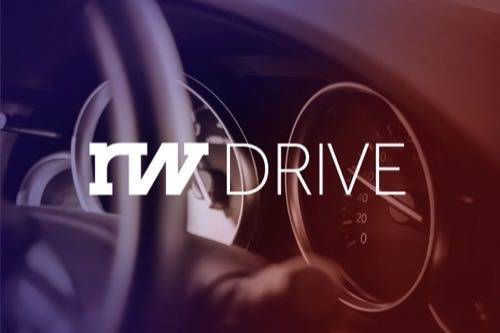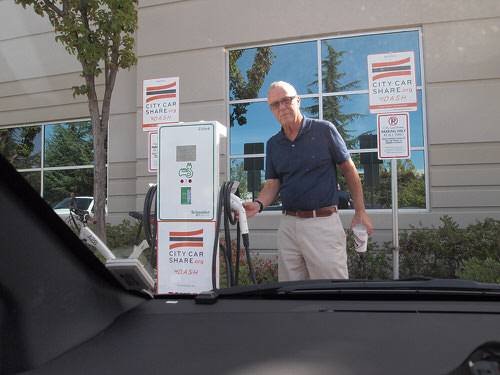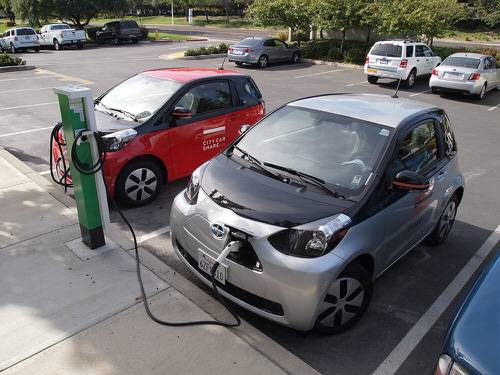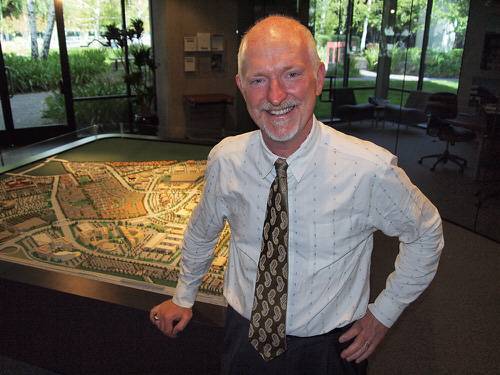
ReadWriteDrive is an ongoing series covering the future of transportation.
San Francisco is a hotbed of innovation around networked, shared transportation. The city’s young tech-savvy denizens, wanting to get from A to B, can use app-based services to fetch a ride (Uber), find parking (SFPark) and gain hourly access to just about everything with wheels—from cars and rides to scooters and bikes.
But traveling 25 miles east to Pleasanton, Calif. is like a trip back in time. There, like in many parts of the U.S., it’s standard procedure to drive alone in a gas-guzzler, motoring solo from home to work to mall and back. Now a new pilot program, dubbed “Dash,” changes that paradigm by bringing 21st Century networked mobility to a quintessential 1970s environment: the suburban business park.
Dash Out For Lunch
The initiative uses 30 small electric cars—Scion IQ electric vehicles (EVs) on loan for three years from Toyota to City CarShare, a Bay Area non-profit. The EVs will soon be positioned throughout Hacienda, a square-mile residential and business development where nearly 18,000 people work, and 4,000 people live. When fully deployed, residents will be no more than a five-minute walk away from quick, easy and cheap zero-emissions mobility.

“What we’re depending on is that enough people here during the day are marooned,” said Mike Harrigan, City CarShare’s efleet program manager.
Harrigan told me that about 18% of Hacienda workers already take public transportation, carpool or ride a bike to the office. “They come in on BART (Bay Area Rapid Transit) and now they want to go to lunch or run an errand. If we can give people an alternative to driving to work on those days, when they know they’re going to need a car, maybe we can convince a few people who don’t use mass transit to start using it.” His relatively modest goal is to have each car used a couple times a day.
How It Works
Each Dash location, called a “pod,” provides two small electric cars plugged into one charging station. Schneider Electric donated the charging stations, which Toyota and the Bay Area Air Quality Management District paid to install.
As with other cars in its fleet, City CarShare places a small computer, about the size of a deck of cards, inside the dashboard. After receiving an electronic key fob, users can reserve a car online or via an app. That reservation is beamed via cell phone to the car.

“We tell the car to expect such and such a fob number at a certain time of the day,” said Harrigan. “The user comes come along, opens the car and it communicates back, ‘I’ve been opened.’”
By virtue of the fob reader, a GPS antennae, some memory and little bit of logic, the system knows when a car is in use, by whom, where it is, the odometer reading and the remaining charge on the vehicle’s battery. Each car carries its own RFID card to access the pod’s charging station, which communicates via the ChargePoint network. That completes the smart shared-EV information system. Cars don’t become available for reservations until they’ve charged for about two hours, ensuring a topped-up battery for the next user.
The Cars
Toyota first unveiled the Scion iQ EV at the 2009 Detroit auto show. At the time, the Japanese automaker referred to the micro-car as the FT-EV concept, saying that it planned to launch “an urban commuter battery-electric vehicle by 2012.” The company instead made only 100 of the cars.
The Scion iQ—only slightly bigger than a Smart ForTwo—has a driving range of about 40 miles. “Part of the reason we selected Hacienda is because we believe most of the uses will be short local trips, to downtown Pleasanton, over to nearby Dublin or Stoneridge Mall, or to meetings within the business park,” said Harrigan.
What the IQ EV lacks in space, it makes up in amenities, like a leather-wrapped steering wheel, navigations system, and Bluetooth connectivity. In my short ride around Pleasanton, it was zippy and quiet like other electric cars—perfect for, well, a quick dash. It’s comfortable, maneuverable and has a top speed of 78 miles per hour. Moreover, the iQ EV has low cost of fueling, and takes a full recharge in about two hours.
Goal: Make It Better Than Driving Alone
City CarShare also picked Hacienda because the managers of the development have been begging for car-sharing services for a long time. “We’ve been trying to get City CarShare out here for a decade,” said James Paxson, general manager at Hacienda. Paxson, a daily commuter on BART from Berkeley to Pleasanton, is a power-user of Dash.

“This is a perfect solution for me. Today, I’m going to be using the car twice” said Paxson, who has been with Hacienda for 28 years.
Over the years, Hacienda has functioned like an incubator of ideas for reducing congestion and improving the quality of life for local workers and residents. Working with the city of Pleasanton, it wrote the nation’s first transportation systems management ordinance in 1985. The development subsidizes public transit, making buses and shuttles free for locals. However these services unfortunately operate mostly during commuter hours, leaving office workers in the lurch.
“If you really want to get people to shift modes, you have to do something that competes on a time basis, a money basis and offers true convenience,” said Paxson. “Something that’s better than driving alone.” Use of Dash cars costs $5 an hour, plus $0.35 a mile—common rides are in the $10 to $12 range. At that cost, it competes with commuting to work by car, and when total cost of owning a vehicle is considered, it’s the clear winner.
“I take BART out here as much as possible, and now I can take it even more,” said Paxson. “That’s found time. I get time on the train that I would otherwise be sitting behind the wheel of car. That’s hugely valuable.”
With shared EVs now in use at Hacienda, Paxson is imagining how to bring dynamic ride sharing to the development. He said, “The next big move is going to be an app, to make use of existing infrastructure, but in new and creative ways.”
Images courtesy of Bradley Berman.









